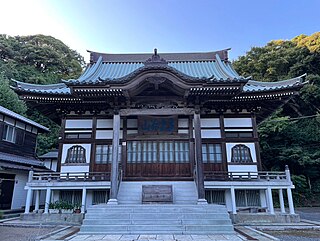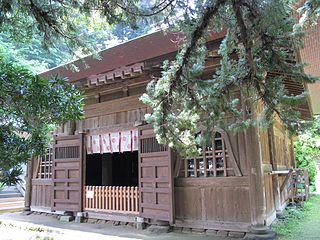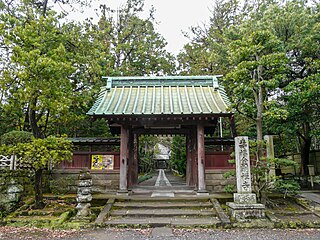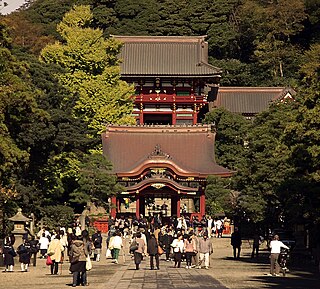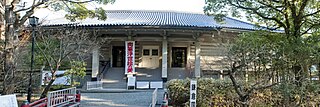Self-guided Sightseeing Tour #1 in Kamakura, Japan
Legend
Guided Free Walking Tours
Book free guided walking tours in Kamakura.
Guided Sightseeing Tours
Book guided sightseeing tours and activities in Kamakura.
Tour Facts
1.8 km
64 m
Experience Kamakura in Japan in a whole new way with our free self-guided sightseeing tour. This site not only offers you practical information and insider tips, but also a rich variety of activities and sights you shouldn't miss. Whether you love art and culture, want to explore historical sites or simply want to experience the vibrant atmosphere of a lively city - you'll find everything you need for your personal adventure here.
Activities in KamakuraIndividual Sights in KamakuraSight 1: Myo-an-ji
Myodenji is a Nichiren sect temple located in Ougigaya, Kamakura City, Kanagawa Prefecture. Its mountain name is Shoshinzan or Tahouyasan. The former head temple is Sanmatsu Rengeji. It belongs to the Shinshi school. The temple grounds are said to be the site of the former Izumigaya Ougidani Tahouji, which was founded by the Bodhisattva Ninsei in the second year of Kōchō (1262).
Sight 2: Jokomyoji Temple
Jokomyoji is a Shingon Susen Wakuji shrine in Ogigaya, Kamakura City, Kanagawa Prefecture. The mountain is Senkokuzan. Opening is Hojo Cho. The mountain is Shina. The principal is Amida Nyorai. In a deep temple related to Hojo and Ashikaga, Takashi Ashikaga tells him that he was in the temple just before Emperor Godaigo raised his army. No. 82 of the 88th sacred place in the new Shikoku East.
Sight 3: Eishōji
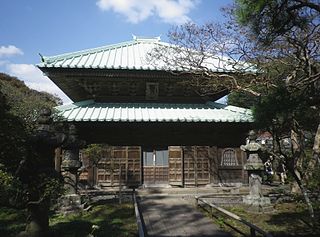
Eisho-ji (英勝寺) is a Jōdo-shū temple in Ogigayatsu, Kamakura, Kanagawa, Japan, and is the sole nunnery in Kamakura. The mountain name is Tokozan.
Sight 4: Jufuku-ji
Kikokuzan Kongō Jufuku Zenji (亀谷山金剛寿福禅寺), usually known as Jufuku-ji, is a temple of the Kenchō-ji branch of the Rinzai sect and the oldest Zen temple in Kamakura, Kanagawa Prefecture, Japan. Ranked third among Kamakura's prestigious Five Mountains, it is number 24 among the Thirty-Three Kamakura Kannon pilgrimage temples and number 18 of the Kamakura Nijūyon Jizō (鎌倉二十四地蔵) temples. Its main object of worship is Shaka Nyorai.
Sight 5: Tsurugaoka Hachiman Shrine
Get Ticket*Tsurugaoka Hachimangū (鶴岡八幡宮) is the most important Shinto shrine in the city of Kamakura, Kanagawa Prefecture, Japan. The shrine is a cultural center of the city of Kamakura and serves as the venue of many of its most important festivals with two museums.
Sight 6: Kamakura Museum of National Treasures
The Kamakura Museum of National Treasures or Kamakura Museum or Kamakura National Treasure House is a museum located on the grounds of Tsurugaoka Hachiman-gū in Yukinoshita, Kamakura, Kanagawa Prefecture, Japan. The museum houses around 4800 objects from the Kamakura region including sculptures, paintings and industrial art objects. Most of these works originate from the Kamakura and Muromachi periods, spanning from the 12th to the 16th century. Some of the items were produced in China and imported to Japan.
Wikipedia: Kamakura Museum of National Treasures (EN), Website
Share
How likely are you to recommend us?
Disclaimer Please be aware of your surroundings and do not enter private property. We are not liable for any damages that occur during the tours.
GPX-Download For navigation apps and GPS devices you can download the tour as a GPX file.
